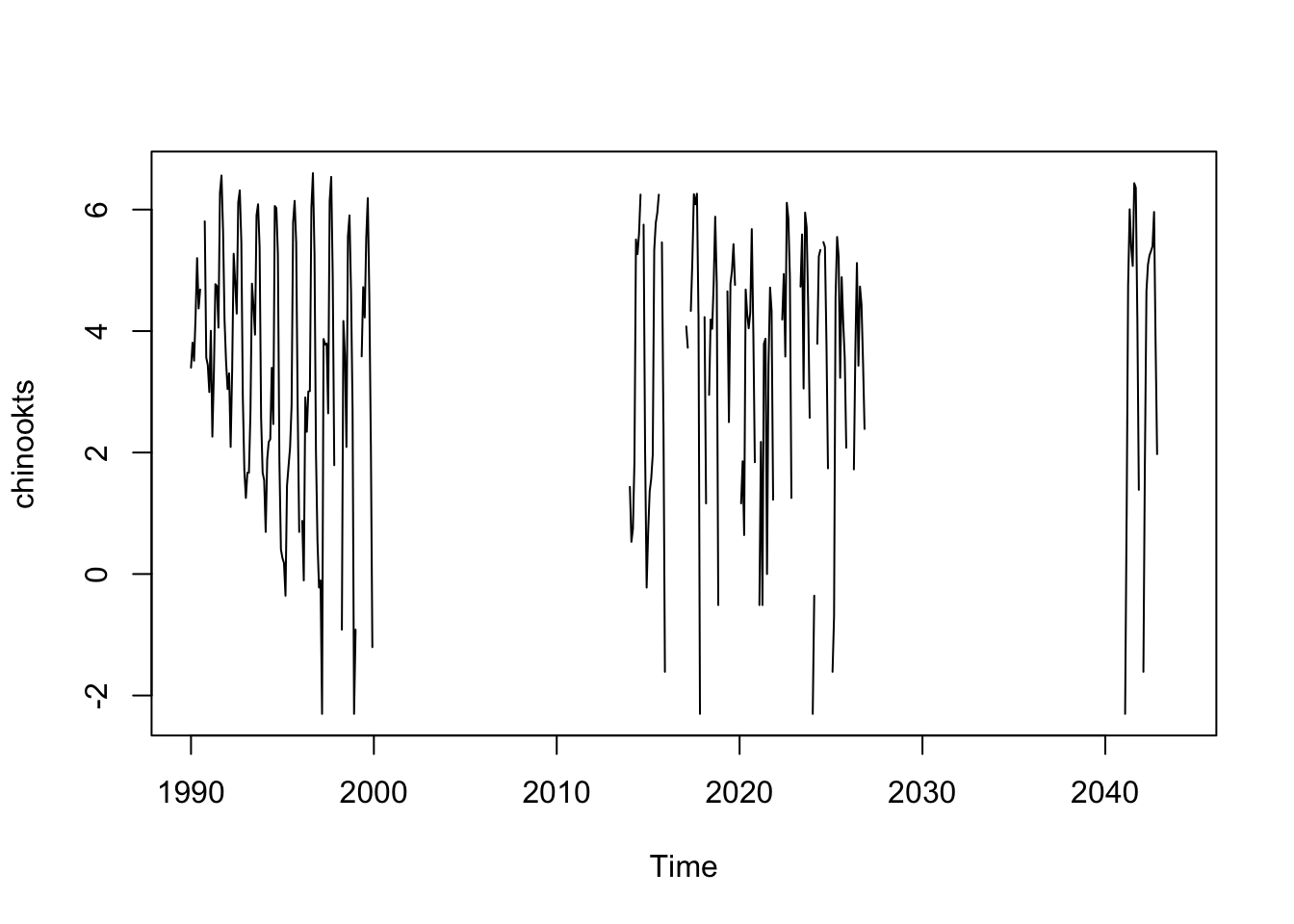5.11 Seasonal ARIMA model
The Chinook data are monthly and start in January 1990. To make this into a ts object do
chinookts <- ts(chinook$log.metric.tons, start = c(1990, 1),
frequency = 12)start is the year and month and frequency is the number of months in the year.
Use ?ts to see more examples of how to set up ts objects.
5.11.1 Plot seasonal data
plot(chinookts)
5.11.2 auto.arima() for seasonal ts
auto.arima() will recognize that our data has season and fit a seasonal ARIMA model to our data by default. Let’s define the training data up to 1998 and use 1999 as the test data.
traindat <- window(chinookts, c(1990, 10), c(1998, 12))
testdat <- window(chinookts, c(1999, 1), c(1999, 12))
fit <- forecast::auto.arima(traindat)
fitSeries: traindat
ARIMA(1,0,0)(0,1,0)[12] with drift
Coefficients:
ar1 drift
0.3676 -0.0320
s.e. 0.1335 0.0127
sigma^2 estimated as 0.8053: log likelihood=-107.37
AIC=220.73 AICc=221.02 BIC=228.13Use ?window to understand how subsetting a ts object works.